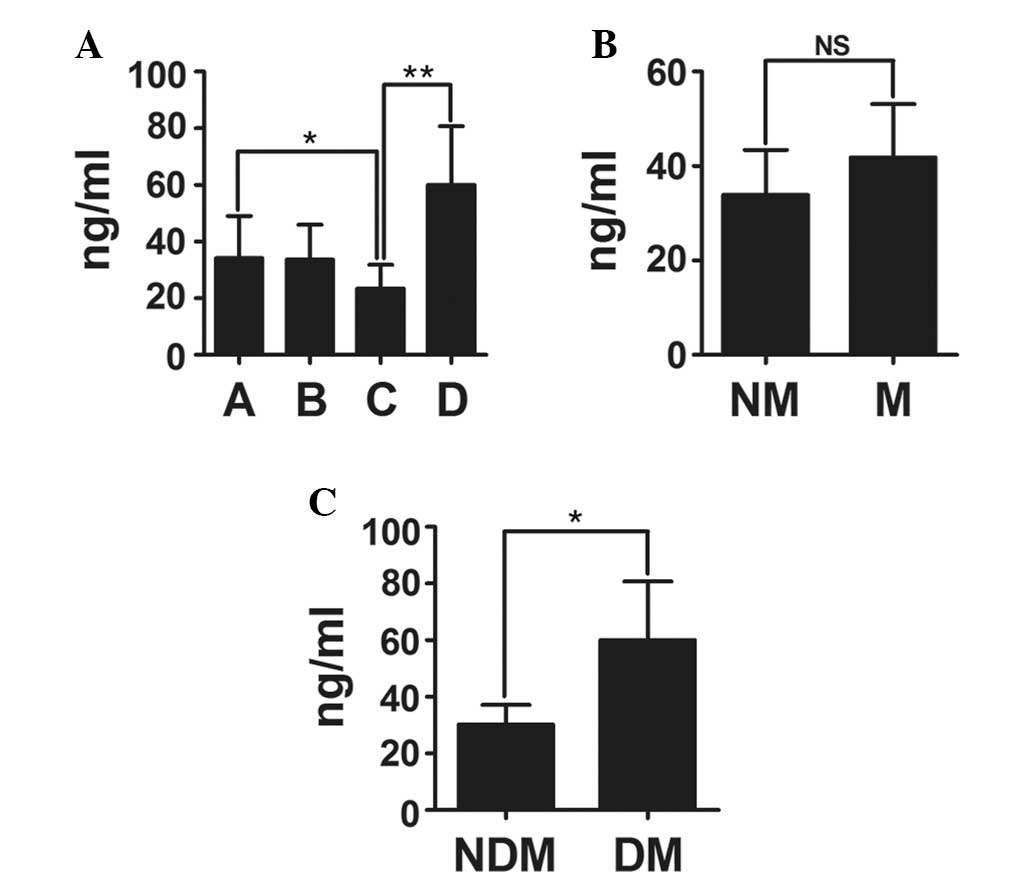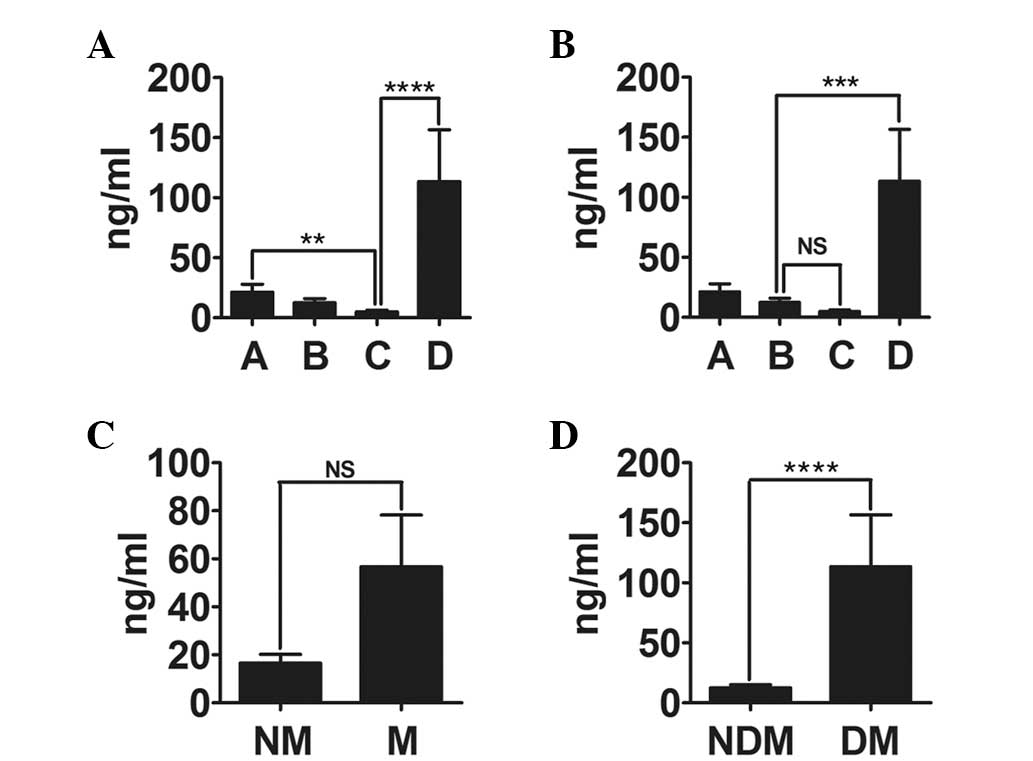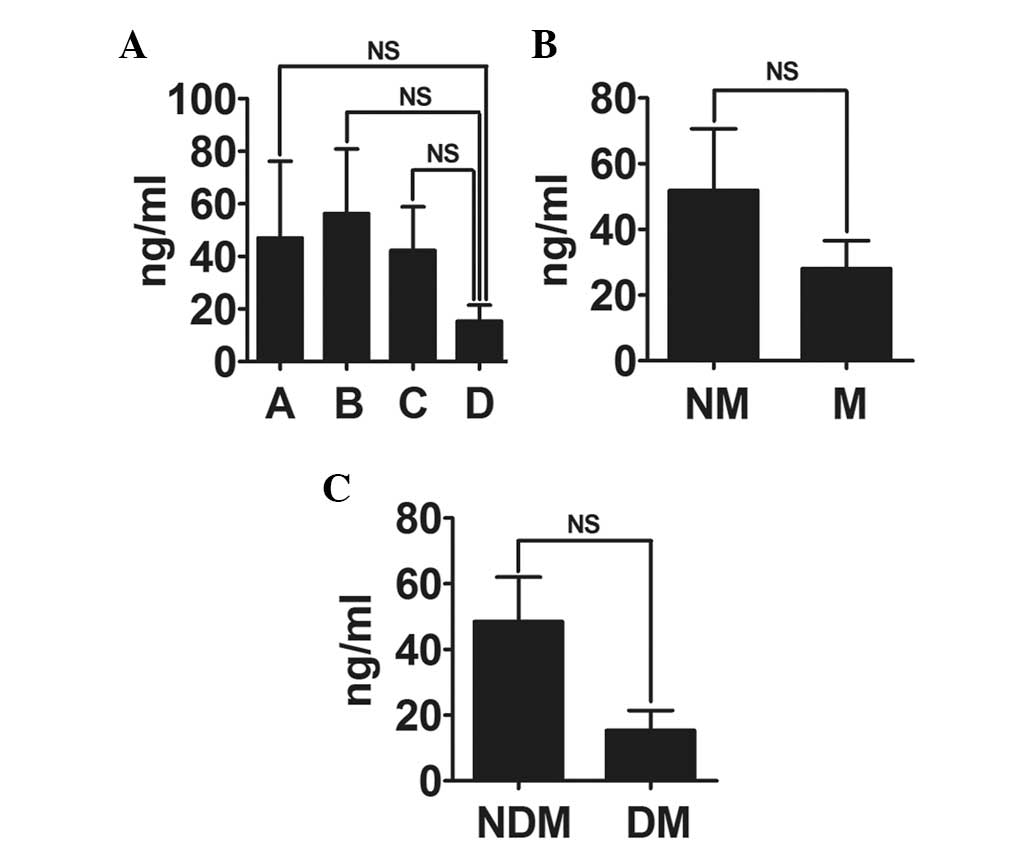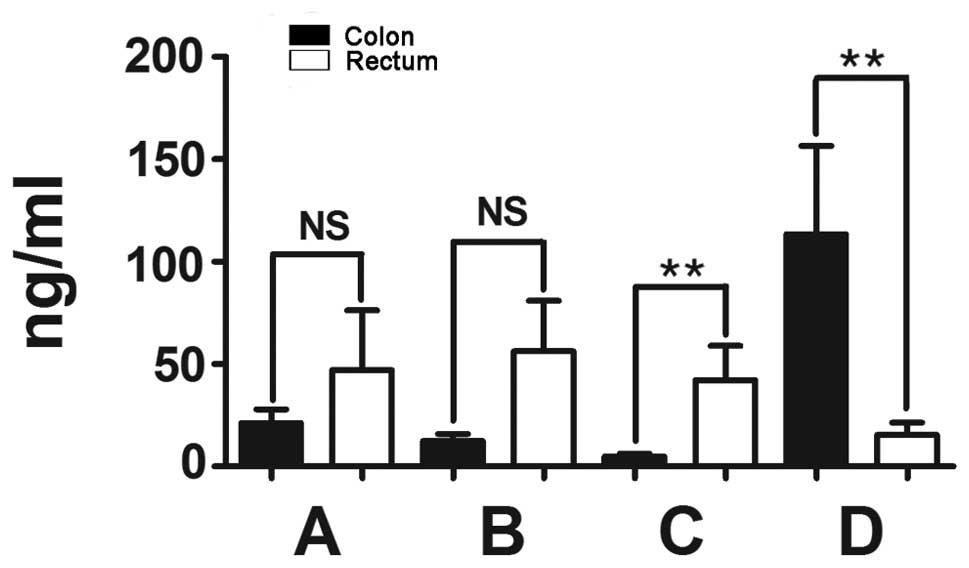|
1
|
Jemal A, Bray F, Center MM, Ferlay J, Ward
E and Forman D: Global cancer statistics. CA Cancer J Clin.
61:69–90. 2011. View Article : Google Scholar
|
|
2
|
Wakai K, Hirose K, Matsuo K, Ito H, Kuriki
K, Suzuki T, Kato T, Hirai T, Kanemitsu Y and Tajima K: Dietary
risk factors for colon and rectal cancers: a comparative
case-control study. J Epidemiol. 16:125–135. 2006. View Article : Google Scholar : PubMed/NCBI
|
|
3
|
Cancer Genome Atlas Network. Comprehensive
molecular characterization of human colon and rectal cancer.
Nature. 487:330–337. 2012. View Article : Google Scholar : PubMed/NCBI
|
|
4
|
Mayer RJ, Garnick MB, Steele GD Jr and
Zamcheck N: Carcinoembryonic antigen (CEA) as a monitor of
chemotherapy in disseminated colorectal cancer. Cancer. 42(Suppl
3): 1428–1433. 1978. View Article : Google Scholar : PubMed/NCBI
|
|
5
|
Petrioli R, Licchetta A, Roviello G, et
al: CEA and CA19.9 as early predictors of progression in
advanced/metastatic colorectal cancer patients receiving
oxaliplatin-based chemotherapy and bevacizumab. Cancer Invest.
30:65–71. 2012. View Article : Google Scholar
|
|
6
|
Gold P and Freedman SO: Specific
carcinoembryonic antigens of the human digestive system. J Exp Med.
122:467–481. 1965. View Article : Google Scholar : PubMed/NCBI
|
|
7
|
Shuster J, Thomson DM, Fuks A and Gold P:
Immunologic approaches to diagnosis of malignancy. Prog Exp Tumor
Res. 25:89–139. 1980.
|
|
8
|
Shively JE and Beatty JD: CEA-related
antigens: molecular biology and clinical significance. Crit Rev
Oncol Hematol. 2:355–399. 1985. View Article : Google Scholar : PubMed/NCBI
|
|
9
|
Hefta LJ, Neumaier M and Shively JE:
Kinetic and affinity constants of epitope specific
anti-carcinoembryonic antigen (CEA) monoclonal antibodies for CEA
and engineered CEA domain constructs. Immunotechnology. 4:49–57.
1998. View Article : Google Scholar : PubMed/NCBI
|
|
10
|
Kojima T, Yoshikawa K, Matsui T, Kodera Y
and Kojima H: Titration of serum CEA, p53 antibodies and CEA-IgM
complexes in patients with colorectal cancer. Mol Med Rep.
2:477–480. 2009.PubMed/NCBI
|
|
11
|
Edge SB and Compton CC: The American Joint
Committee on Cancer: the 7th edition of the AJCC cancer staging
manual and the future of TNM. Ann Surg Oncol. 17:1471–1474. 2010.
View Article : Google Scholar : PubMed/NCBI
|
|
12
|
Chen CC, Yang SH, Lin JK, Lin TC, Chen WS,
Jiang JK, Wang HS and Chang SC: Is it reasonable to add
preoperative serum level of CEA and CA19-9 to staging for
colorectal cancer? J Surg Res. 124:169–174. 2005. View Article : Google Scholar : PubMed/NCBI
|
|
13
|
Midiri G, Amanti C, Consorti F, Benedetti
M, Del Buono S, Di Tondo U, Castagna G, Peronace L and Di Paola M:
Usefulness of preoperative CEA levels in the assessment of
colorectal cancer patient stage. J Surg Oncol. 22:257–260. 1983.
View Article : Google Scholar : PubMed/NCBI
|
|
14
|
Pasanen PA, Eskelinen M, Partanen K,
Pikkarainen P, Penttila I and Alhava E: Clinical value of serum
tumour markers CEA, CA 50 and CA 242 in the distinction between
malignant versus benign diseases causing jaundice and cholestasis;
results from a prospective study. Anticancer Res. 12:1687–1693.
1992.
|
|
15
|
Lin JK, Lin CC, Yang SH, Wang HS, Jiang
JK, Lan YT, Lin TC, Li AF, Chen WS and Chang SC: Early
postoperative CEA level is a better prognostic indicator than is
preoperative CEA level in predicting prognosis of patients with
curable colorectal cancer. Int J Colorectal Dis. 26:1135–1141.
2011. View Article : Google Scholar : PubMed/NCBI
|
|
16
|
Li M, Li JY, Zhao AL and Gu J: Colorectal
cancer or colon and rectal cancer? Clinicopathological comparison
between colonic and rectal carcinomas. Oncology. 73:52–57. 2007.
View Article : Google Scholar : PubMed/NCBI
|
|
17
|
Nielsen HJ, Brunner N, Jorgensen LN, et
al: Plasma TIMP-1 and CEA in detection of primary colorectal
cancer: a prospective, population based study of 4509 high-risk
individuals. Scand J Gastroenterol. 46:60–69. 2011. View Article : Google Scholar : PubMed/NCBI
|
|
18
|
Lee WS, Baek JH, Kim KK and Park YH: The
prognostic significant of percentage drop in serum CEA post
curative resection for colon cancer. Surg Oncol. 21:45–51. 2012.
View Article : Google Scholar : PubMed/NCBI
|
|
19
|
Hashiguchi Y, Hase K, Ueno H, Mochizuki H,
Kajiwara Y, Ichikura T and Yamamoto J: Prognostic significance of
the number of lymph nodes examined in colon cancer surgery:
clinical application beyond simple measurement. Ann Surg.
251:872–881. 2010. View Article : Google Scholar
|
|
20
|
Elias E, Mukherji D, Faraj W, Khalife M,
Dimassi H, Eloubeidi M, Hattoum H, Abou-Alfa GK, Saleh A and
Shamseddine A: Lymph-node ratio is an independent prognostic factor
in patients with stage III colorectal cancer: a retrospective study
from the Middle East. World J Surg Oncol. 10:632012. View Article : Google Scholar : PubMed/NCBI
|














